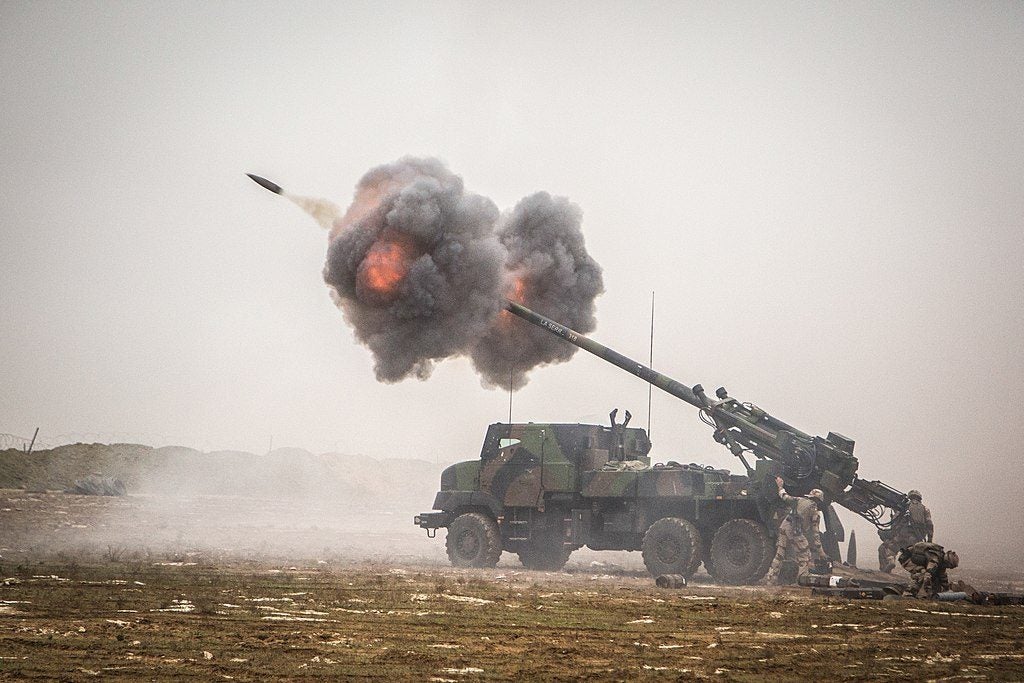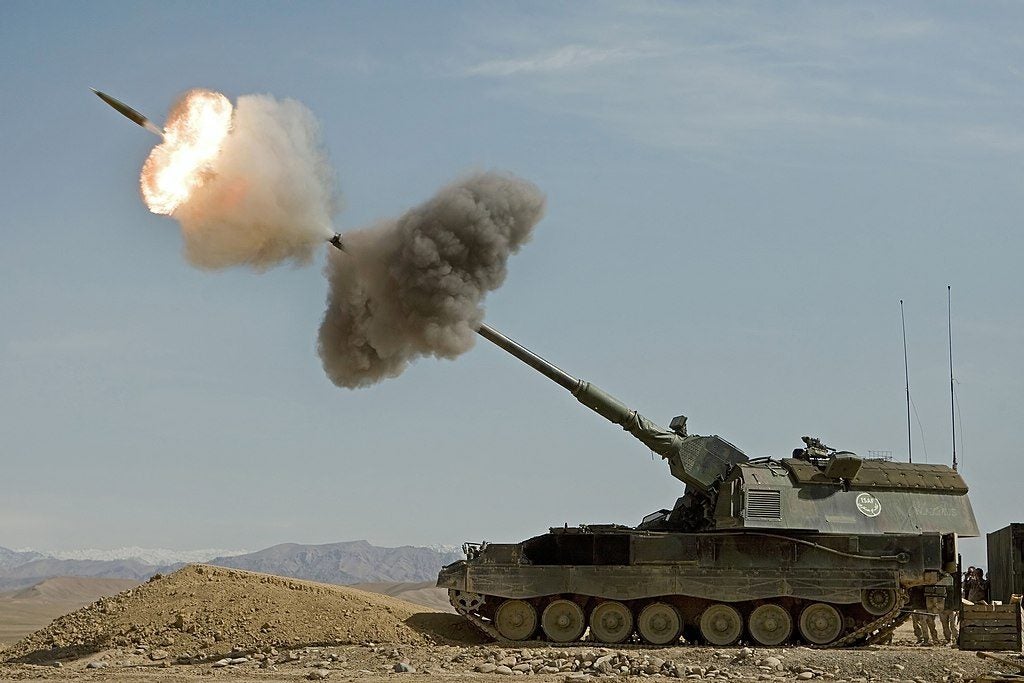155mm PzH 2000 Self-Propelled Artillery (and SMArt ammunition) in Action in Ukraine
In a significant increase to Ukrainian artillery capabilities, the German-produced Panzerhaubitze 2000 (PzH 2000) 155mm self-propelled artillery has been transferred to Ukrainian forces and is in action against Russian forces.
According to public announcements, Germany has transferred seven PzH 2000s with the Dutch adding an additional five platforms for an initial total of a dozen. Germany announced their intention to deliver a further six platforms – three from their own national stocks and a further three from Netherlands – on 29 June 2022.
Ukrainian Defence Minister Oleksii Reznikov announced on 21 June 2022 that the initial tranche of PzH 2000s had been delivered into Ukrainian hands and acknowledged the Dutch and Germans for their assistance. Ukrainian gunners have been undergoing training in the platform in Germany since May by a cadre of Dutch and German instructors

The Ukrainian Defence Ministry has posted images of the vehicle in action with the following comment: “
“A 155mm self-propelled gun Panzerhaubitze 2000 has already ‘worked’ against Russian invaders on the eastern borders. Rapid fire. Precision. Effective use of ammunition. Minimum time for hitting a target and leaving a combat position. The PzH 2000 is a German combat vehicle weighing over 55 tonnes and already ‘registered’ with the Ukrainian Armed Forces.”
The platforms have also been supplied with precision SMArt 155 (Suchzünder Munition für die Artillerie 155 or “sensor-fuse munition 155mm artillery”) ammunition. The SMArt rounds detonate above a target and propels two submunitions, both with their own sensors, to provide terminal guidance onto the top armour of targets. Ukrainian media has reported the use of the SMArt 155 projectiles against Russian armour this week.
Ukrainian indirect capabilities have also been improved with the delivery of the French Nexter CAESAR with a dozen in service with a promised further six to follow. Self-propelled M109 155mm platforms in a number of variants also continue to be delivered from a range of NATO nations.

Deliveries of towed 155mm M777 and 105mm L118/119 also continue although towed platforms are more susceptible to Russian counter-battery fire whilst the wheeled and tracked platforms can ‘shoot and scoot’ to avoid Russian retaliatory fires. The Russo-Ukraine War has thus likely signalled the end of the towed artillery platform in peer or near-peer conflicts.
Ammunition remains a critical factor with supplies dwindling for Ukraine’s many legacy 152mm systems including the Czech DANA. Russian efforts to covertly reduce the availability of 152mm ammunition on the global market have seemingly paid off. Production of 155mm ammunition is being ramped up to help with the shortfall as Ukraine transitions to the NATO standard round.
In a fascinating aside, in a recently released RUSI report, it was noted that when Russian counter-battery fire that was driven by traditional methods (electronic warfare, counter-battery radars etc.) it would typically take half an hour before largely inaccurate counter-battery fire was delivered on Ukrainian positions. In the case of UAV directed counter-battery, that response time was cut to “3 to 5 minutes” and was considered far more accurate by those on the receiving end. With drones once again demonstrating their worth it is unsurprising Ukrainian troops have been using MANPADS to down Russian reconnaissance drones. With drones cutting down response times and improving accuracy on target the shoot and scoot capability of the PzH 2000 is vital.

